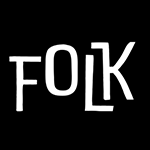"Finding Home" is now available on Amazon.
Creative Journaling: Keeping a Record of Your Ideas
Keeping a creative journal is a wonderful way to capture your thoughts, ideas, and inspirations. For those of us in our golden years, creative journaling can be a fulfilling and enriching activity that keeps our minds sharp and engaged. Here are the benefits of keeping a creative journal and some tips on how to get started.
The Benefits of Creative Journaling
Creative journaling offers numerous benefits, enhancing both your creativity and overall well-being. Here are some key advantages:
- Idea Generation: A creative journal is a place to jot down ideas as they come to you. This can help you capture fleeting thoughts and turn them into something meaningful later.
- Improved Focus: Regular journaling can help improve your focus and concentration. It encourages you to spend time thinking deeply about your ideas and projects.
- Stress Relief: Journaling can be therapeutic, helping you process emotions and reduce stress. It provides a safe space to express your thoughts and feelings.
- Enhanced Creativity: By regularly engaging in creative writing, drawing, or other forms of expression, you can stimulate your creativity and discover new ways of thinking.
- Personal Growth: Keeping a journal allows you to reflect on your experiences and track your progress over time. It can lead to greater self-awareness and personal growth.
Tips for Getting Started with Creative Journaling
Starting a creative journal is simple, but maintaining the habit can be challenging. Here are some tips to help you get started and stay committed:
- Choose Your Tools: Select a notebook or sketchbook that you love. Whether it’s a simple journal or a fancy leather-bound book, having a journal that you enjoy using can motivate you to write or draw regularly. Don’t forget to choose your favorite pens, pencils, or markers.
- Set a Routine: Dedicate a specific time each day to journal. Whether it’s in the morning with your coffee or in the evening before bed, establishing a routine can help you build the habit.
- Start Small: Begin with short, manageable entries. You don’t have to write pages every day. Even a few sentences or a quick sketch can be beneficial.
- Use Prompts: If you’re unsure what to write or draw, use prompts to spark your creativity. Prompts can be questions, quotes, or simple phrases that inspire you to think and create.
- Mix It Up: Don’t limit yourself to just writing. Incorporate drawings, collages, or other forms of creative expression. This can keep your journaling experience fresh and exciting.
Types of Creative Journals
There are many different types of creative journals you can keep, depending on your interests and goals. Here are a few ideas:
- Idea Journal: Use this journal to jot down all your creative ideas, no matter how big or small. This can include project concepts, inventions, or random thoughts that you might want to explore later.
- Art Journal: Combine writing with drawing, painting, or collage. An art journal allows you to express yourself visually and can be a great way to explore new artistic techniques.
- Gratitude Journal: Focus on positive experiences and things you are grateful for. This can help shift your mindset to a more positive and creative state.
- Travel Journal: Document your travels and adventures. Include sketches, maps, and descriptions of the places you visit. This can be a wonderful way to capture memories and inspirations from your journeys.
- Dream Journal: Record your dreams and any insights they might provide. Dreams can be a rich source of creative inspiration.
Creative Journaling Techniques
Here are some techniques to enhance your creative journaling practice:
- Stream of Consciousness: Write without stopping for a set amount of time. Let your thoughts flow freely without worrying about grammar or punctuation.
- Mind Mapping: Use diagrams to explore and connect ideas. Start with a central concept and draw branches to related ideas, thoughts, or images.
- List Making: Create lists of things that inspire you, goals you want to achieve, or ideas you want to explore. Lists can be a simple yet effective way to organize your thoughts.
- Collage: Cut out images, words, and phrases from magazines or printouts and glue them into your journal. Collages can help you visualize ideas and themes.
- Quote Reflections: Write down quotes that resonate with you and reflect on why they are meaningful. This can provide insights and spark new ideas.
Staying Motivated
To keep up with your creative journaling practice, it’s important to stay motivated. Here are some tips:
- Set Goals: Establish clear goals for your journaling practice, such as filling a page a day or completing a certain number of entries each week.
- Join a Group: Participate in a journaling group or find a journaling buddy. Sharing your experiences and creations with others can provide support and inspiration.
- Reward Yourself: Treat yourself when you reach your journaling goals. Rewards can be simple, like enjoying a favorite snack or taking a relaxing bath.
- Be Kind to Yourself: Don’t be too hard on yourself if you miss a day or don’t feel particularly creative. The important thing is to keep coming back to your journal.
Conclusion
Creative journaling is a powerful tool for enhancing creativity, reducing stress, and fostering personal growth. By setting a routine, using prompts, and exploring different types of journals, you can develop a fulfilling journaling practice that brings joy and inspiration to your daily life.
Start today by picking up a notebook and jotting down your thoughts, ideas, or a quick sketch. Embrace the process of creative journaling and watch as it enriches your creativity and overall well-being.
Allow this Muse to inspire your next creative work.
Source: OpenAI. (2024). ChatGPT (4o) [Large language model]. https://chatgpt.com
